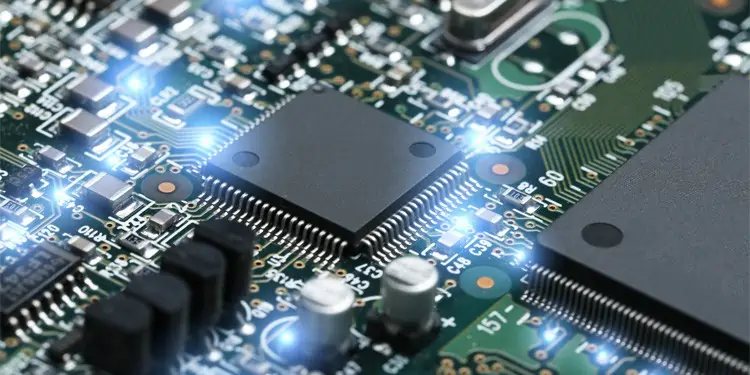Computers run a diagnostic sequence, Power-On Self-Test (POST) from its BIOS during startup. This test checks all your hardware devices such as CPU, GPU, RAM, keyboard, USB, etc., and determines whether they are running correctly.
If it doesn’t find any issues with your devices, your PC starts booting. However, if POST detects any problems, your PC starts beeping with particular patterns depending on the nature of the problem.
Why is PC Beeping on Startup?
As mentioned earlier, startup beep indicates hardware failure. There are many hardware components on a PC and individual component can fail in a number of ways. So, it’s not possible to list out all the reasons for startup beeps. However, some common causes are as follows:
- Bad, improperly seated, or missing video card.
- Defective or improperly seated RAM, CPU or GPU.
- Unnecessarily high CPU voltage.
- Low CPU Fan speed.
- Issues with motherboard circuits.
- Keyboard failure due to short circuit.
- Corrupt or damaged BIOS.
How to Troubleshoot Startup Beeps on PC?
The first thing you need to do is listen carefully and determine the number of beeps and whether there’s any pattern to it. You can restart your PC multiple times till you are certain of the beep pattern.
Then, check what the particular beep sequence represents from your motherboard’s official website. The University Information Technology Services also lists the beep codes for most common BIOS.
The patterns and number of beeps vary between different motherboards. Some computers display the POST or Beep error on the screen as well. Additionally, on some devices, such as HP, you need to look out for LED blink patterns as well.
If the beep just indicates that the Power-On Self-Test completed without finding any errors, you don’t need to do anything. Otherwise, go through the possible solutions below depending on which component has some issues.
Power Cycle PC
You can resolve the startup beep errors due to stuck, frozen or malfunctioning devices in most scenario by power cycling your PC. This process refreshes these device by properly turning them off and back on again. Here’s how you can power cycle your PC:
- Shutdown or force shutdown your PC by holding the power button for 3 seconds.
- Disconnect all peripherals along with the power cord and the removable laptop battery.
- Press and hold the power button for 20 seconds to drain the capacitor charge.
- Let your PC rest for half an hour if the CPU/GPU temperature is high.
- Reconnect the power cord, battery and just the keyboard. You may get the startup beeps due to keyboard controller errors on some PC if you haven’t attached your keyboard.
Power up your PC and check if your PC beeps on startup.
Check for Stuck or Shorted Keys
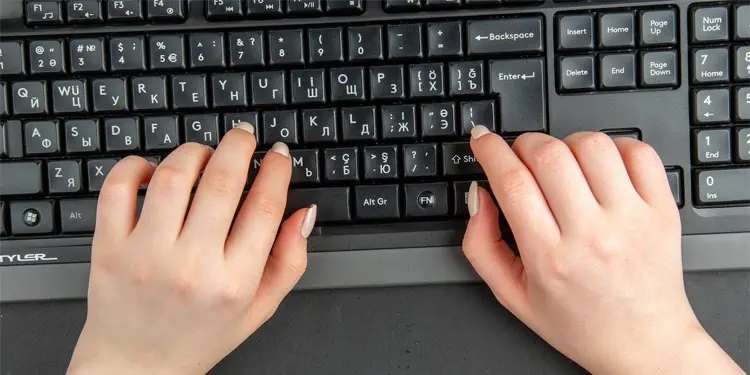
If the beep code corresponds to keyboard controller, it indicates a stuck key or a shorted keyboard circuit. You usually get continuous beeps on most devices if your keyboard has a short circuit.
Check if any keys get stuck or you can’t press it properly. You may be able to unstick the key by pulling it.
Some users have also mentioned that pressing any key when they get the continuous beep was enough to resolve the issue. You can also try if it works, but don’t hold your breath.
We still recommend taking your device to a hardware expert for repair or replacement even if this unlikely fix works as it represents faults with your keyboard.
Reset or Replace CMOS
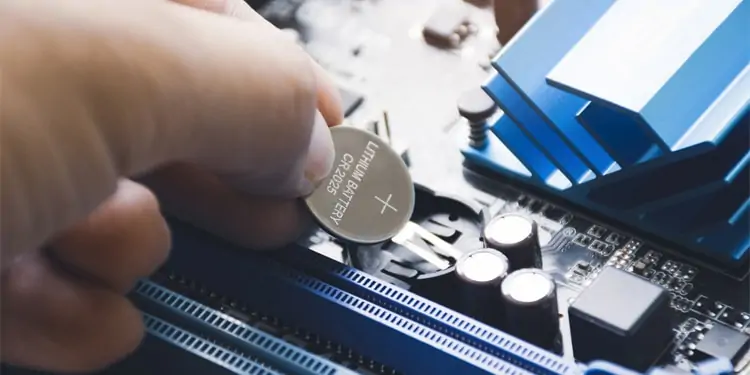
Most errors with ROM, Bios Chips, or CMOS, especially Checksum Errors indicates a defective BIOS. First, try resetting the BIOS settings as it is known to work on very rare cases. You can do so in one of the following ways:
- Removing and replacing CMOS Battery.
- Pressing the red button on the motherboard, if present.
- Shorting the motherboard BIOS jumpers.
If it doesn’t you need to use BIOS Auto Recovery to repair your ROM BIOS. If it doesn’t work, the only possible solution is to replace your BIOS chip or your motherboard.
Check Connections and Re-seat Hardware Chips
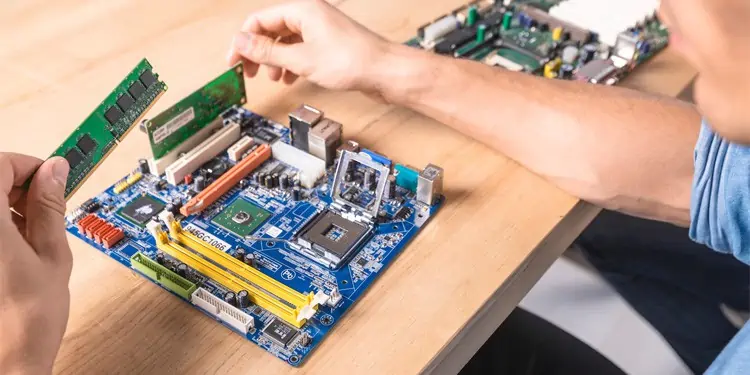
Most beep errors due to hardware failures do not automatically mean that the device is faulty. It is also possible that you haven’t seated them properly or there’s some loose connections. So, remove your computer or laptop’s case and check such connections
- For monitor and keyboard issues, unplug and replug their ribbon connector while making sure to properly fasten the latch.
- You should also check if the power cable and other cables on the monitor have any issues. Ensure that they are connected properly and there are no exposed or damaged wires.
- For RAM, CPU and GPU, there are retaining clips or latches that you should unlock. Then, remove and reinsert them again.
- You can switch your RAM to other available slots as well. And it is also possible to reseat the expansion cards.
- Take special care if you want to reseat your CPU and GPU. Make sure to check if any CPU connectors are bent or damaged and place it carefully.
- Also, lock the latches in place for all the chips as well after placing them.
- If your GPU requires additional power supply, check the power cable’s connection as well.
You should also clean these chips using cotton swab and isopropyl alcohol or by blowing with compressed air before reseating them.
Cleaning the CPU and GPU is a more challenging task, so we recommend taking your device for servicing instead. But you can also follow the advice on our article, How To Clean A CPU Without Damaging it.
Check Power Supply
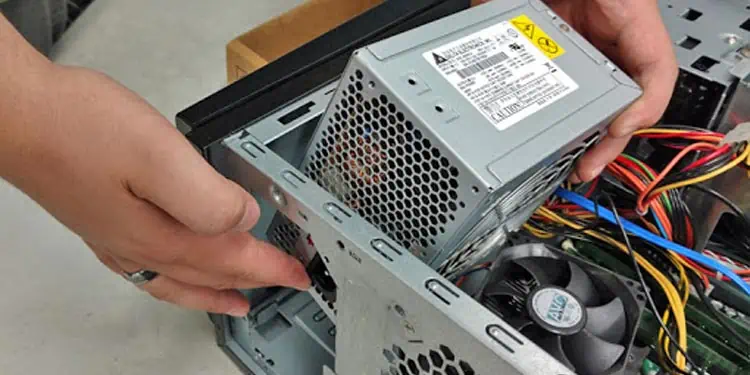
You can also get some beep patterns if your hardware components don’t receive sufficient power from your PSU. It indicates you don’t have a powerful enough Power Supply Unit (PSU) or the power flow suffers from frequent interruptions.
- Make sure to connect the power cables properly.
- If you are using a UPS, try connecting your PSU directly to a power source.
- If there are any issues with this device or it doesn’t correspond to the minimum requirement of your PC, you need to replace the PSU.
Check CPU Fan or Cooling Setup
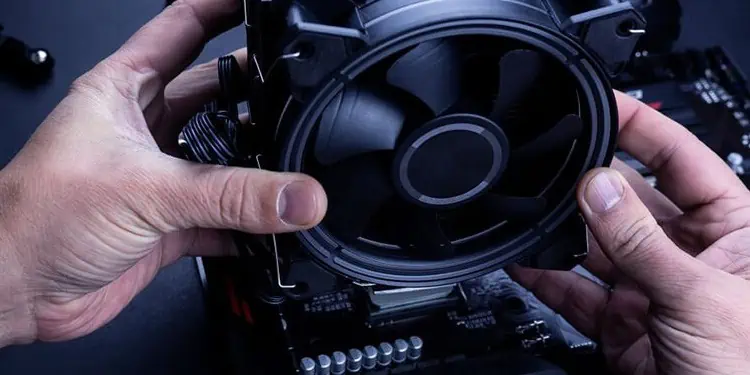
High frequency or alternating beeps (like a siren) mostly indicate that your CPU is overheating. It could be a voltage problem, but, most likely your fan or cooling setup is not working properly.
- If possible, try changing the CPU voltage or fan speed settings in your BIOS/UEFI to an appropriate value. Seek help from the processor’s official website to learn what value is optimum.
- If you can’t do so or you still get beeps due to overheating CPU, you need to remove the CPU cooler, clean it and reinsert it.
We have a dedicated article on How to Remove a CPU Cooler from Motherboard which you can visit to learn the procedure.
If your cooling setup does not dissipate heat fast enough for your setup or is damaged you need to replace it.
Replace Hardware Components
If reinstalling your hardware components on the PC or motherboard doesn’t work, you likely need a replacement.
However, the issue might also be with your motherboard instead of the components. You can test this by using those devices on a functioning PC. If they work in another computer, you need to replace your motherboard.
You also need to replace motherboard if a faulty ROM or BIOS chip is integrated with the motherboard, or if the motherboard circuit itself has some defects.
Replacing the components uses similar steps to reinserting them. So, if you can do so yourself, buy the replacement for the faulty devices while making sure no compatibility issues arise with other hardware.
But we still recommend getting help from a technician to prevent other unforeseen issues.
How to Troubleshoot Startup Beeps on Mac?
On Mac, a startup beep represents issues with your memory or firmware. If you get a beep or three repeated beeps after every five seconds, it’s likely because you haven’t installed the memory properly. So, try reinserting or reinstalling it.
And a three long beep – three short beep – three long beep pattern specifies a firmware issue. However, don’t worry, Mac automatically restores the firmware in such a scenario.
